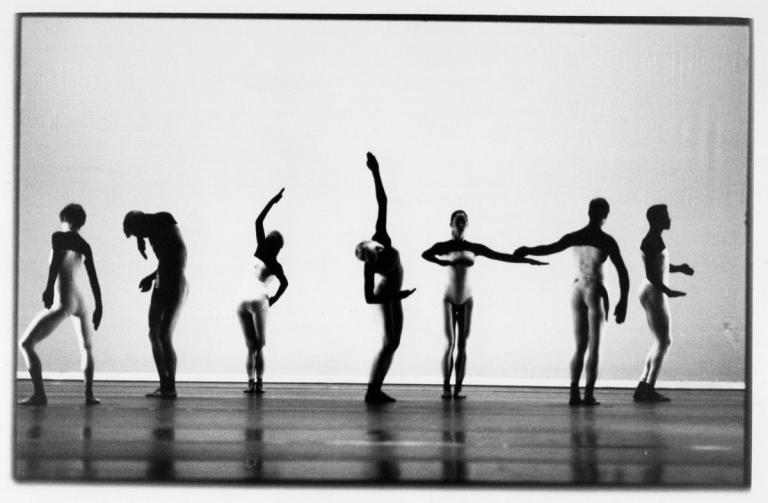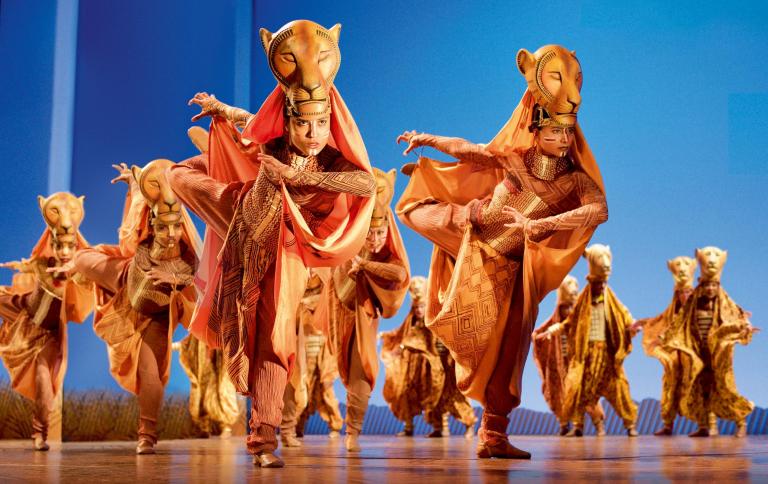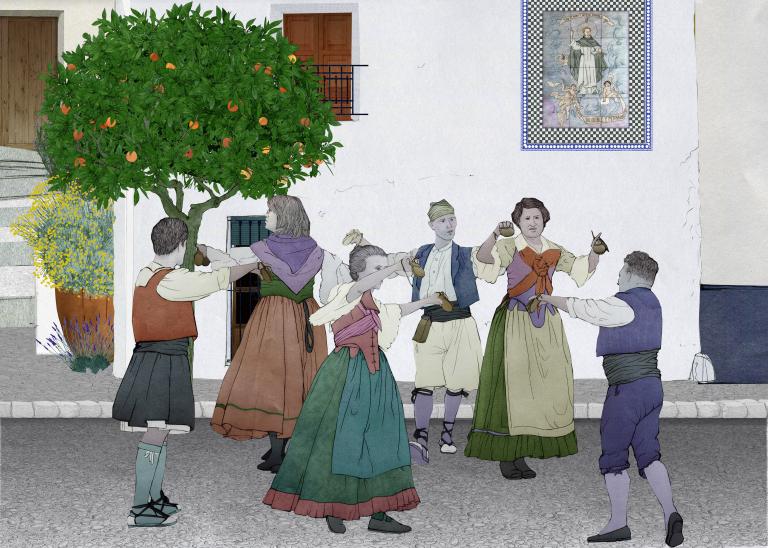Golden Age of Musical Dances
6 min readDiversified dances of the Western Han Dynasty and the Eastern Han Dynasty represented a peak of the secular dance culture,and grand acrobatics performances included many dances.Among those preserved today,the most famous ones were Lingxing Dance and Tray and Drum Dance.

Lingxing Dance,also known as Imitation of Farm Work was a musical dance for worshipping Houji in the Han Dynasty.Houji was the earliest ancestor of the ancient Zhou clan.It is said that Tai’s daughter Jiang Yuan walked on a giant’s footsteps,got pregnant,and gave birth to Houji.Good at planting various grain plants,Houji servedas an agricultural official during the period of Emperor Yao and Emperor Shun.It is said that he planted millet and wheat first.According to Rhapsody on the Lingxing Dance written by Zhu Zaiyu(1536-1611)in the Ming Dynasty,Lingxing Dance was performed by 16 dancers”in pairs”,holding agricultural tools such as sickles,spades,hoes and forks by hand and imitating through dancing various movements of agricultural labor such as reclaiming land,tilling,hoeing,driving away sparrows,harvesting and grinding unhusked rice to commemorate and eulogize Houji’s feat of teaching people to sow and reap.
Tray and Drum Dance, also known as Seven-tray Dance, was a secular dance very popular in the imperial court and among the people and requiring extremely high dancing skills. Dancers danced on drums to music rhythmically, sometimes jumping up, sometimes turning left and right, beating drums with their toes skillfully or rubbing drum surfaces with their bodies. Dancers’ posture of bending and lifting their heads now and then, coming and going fast and remaining neither close nor distant combined with constantly changing musical rhythms to reflect a free and profoundstate of mind. Many images of Tray and Drum Dance were preserved by Han pictorial bricks, so later generations had opportunities to appreciate its charm. It can be seen from these pictorial bricks that the tray and drum dance combined hardness and softness. It was hard because acrobatics programs such as throwing multiple objects up and down without dropping and performing sword dances and rope dances were often staged at the same time, absorbed acrobatic skills, and increased the difficulty of dancing movements; it was soft because of the characteristics of Chu dances performed by female singers with slender waists and long sleeves. As the saying goes,”there is no regular state of the dance, and no complete drum beat”. Meanwhile, Trayand Drum Dance included a solo dance and a group dance. The solo dance is depicted on the pictorial bricks unearthed from Yinan, Shandong: seven trays and one drum were put on the ground, and one man wearing a cap and dance clothes with long sleeves jumped down from the trays and drum in very unrestrained movements and looked back at the trays and drum as the cap ribbons and dance clothes’ sleeves were flying; the group dance is depicted by the pictorial bricks unearthed from Jining, Shandong: three barebacked and barefooted men made movements such as jumping and standing upside down on five drums full of masculinity.
The Tang culture was resplendent. Integration of northwestern ethnic groups’culture and the Han culture, cultural exchange between China and foreign countries, and the policy of promoting Confucianism, Buddhism and Taoism in parallel all effectively brought about a culturally open mentality. It was in this atmosphere thatthe all-inclusive and splendid style of Tang culture and art was created. The singing and dancing art of the Tang Dynasty clearly showed this cultural phenomenon.

In the Tang Dynasty, dancing culture reached a new peak. The Tang Dynasty followed the Sui Dynasty’s institutional structure, further improved various musical dance institutions such as the office in charge of imperial music, theaters and theTaichang Temple, gathered a lot of artists of different ethnic groups, and made Tang musical dances a large carrier for absorbing outstanding foreign cultures and spreading the essence of the Oriental civilization. The ability to sing and dance well became a cultural accomplishment that people of all ranks took pride in. It is said that Emperor Taizong of the Tang Dynasty Li Shimin participated in rehearsing Warriors’ Triumphal Dance,a dance of great renown and influence. This even became one act of this founding emperor’s governance with virtues and military accomplishments.
Emperor Xuanzong of the Tang Dynasty Li Longji was a more versatile and tasteful emperor good at composition of music and able to dance to music. It is said that Rainbow and Feather Garment Dance was his work. In the Tang Dynasty, musical dances penetrated into all social classes. In festive celebrations and banquets held by people of all classes, singing and dancing were indispensable.A Tang mural of the Mogao Grottos, Dunhuang: the whirling dance Tang dances included “robust dances”and “soft dances”. Robust dances showed a powerful style with clear rhythms and vigorous movements; soft dances were just the opposite with slow rhythms, showing a graceful style. The combination of hardness and softness revealed the styles and features of Tang dances.
Collection of Essays on Court Music and Miscellanea on the Music Bureau Poems written in the Tang Dynasty contain the names of many robust dances and soft dances. Robust dances included Sword, Zhezhi, Whirling Dance, Huteng, etc. Sword was a sword dance. Zhezhi was a female solo dance introduced from the Western Regions to the central plains mainly accompanied by drums. The dancing girl waved her long sleeves according to robust and clear beats, and the golden bells on her body produced rhythmic sound. Whirling Dance and Huteng were dances in the northwest and Central Asia spread to the central plains along the Silk Road. The former was characterized by rapid swirling like the wind, and the latter was characterized by quick and changeful jumps.
Representative soft dances included Green Waist, Liangzhou and Spring Orioles’Song. Green Waist, also known as Liuyao, was a female solo dance characterized byincreasingly fast rhythms, light and elegant movements and waving long sleeves.
Night Revels of Han Xizai drawn by Gu Hongzhong in the Five Dynasties Period depicts the scene of dancing girl Wang Wushan’s performance of Liuyao. The dancer in sky blue long-sleeve dance clothes with her back facing the audience turned her head to show half of her face, slightly raised her right foot to tread, and put her hands behind to wave her long sleeves. Liangzhou was a dance in the vicinity of Wuwei, Gansu. Modern minority ethic groups’ bowl and chopstick dances originated from it.
Spring Orioles’ Song was a female solo dance integrated with Qiuci dances’ forms and styles, featuring rotary movements and graceful postures.
The most famous Tang dance was none other than Rainbow and Feather Garment Dance, which was actually a multi-section musical dance combining musical instrument playing, dancing and singing. It is said that Emperor Xuanzong of the Tang Dynasty Li Longji created it. According to the notes on Rainbow and Feather Garment Tune by Tang poet Bai Juyi(772-846), the whole tune consisted of three parts: in the first part, chime stones, vertical bamboo flutes, zithers and flutes produced sounds successively, the rhythm was free and slow, and there was no dancing; in the second part, dancers wearing feathered upper garments and rainbow-shaped skirts like fairies began to dance lightly and elegantly; in the third part, musical rhythms and dancing movements quickened, and a sudden long blow of musical instruments unexpectedly ended the dance in a “selfless wonderland”. It was performed by single dancers and large groups of dancers-for example, the solo dance performed by imperial concubine Yang Yuhuan favored by Emperor Xuanzong of the Tang Dynasty was most famous, and the dance was performed by 300 people in the imperial palace in the 1st year of the Kaicheng Period (836). Rainbow and Feather Garment Dance tried to show an entirely imaginary paradise through music, dancing and clothes.A lot of highly difficult dancing skills such as rotation, waist twisting and sleeve waving were used to create diversified images and create a celestial atmosphere. Rainbow and Feather Garment Dance as a dance with unique aesthetic connotations occupied an important place among Chinese ancient musical dances.









